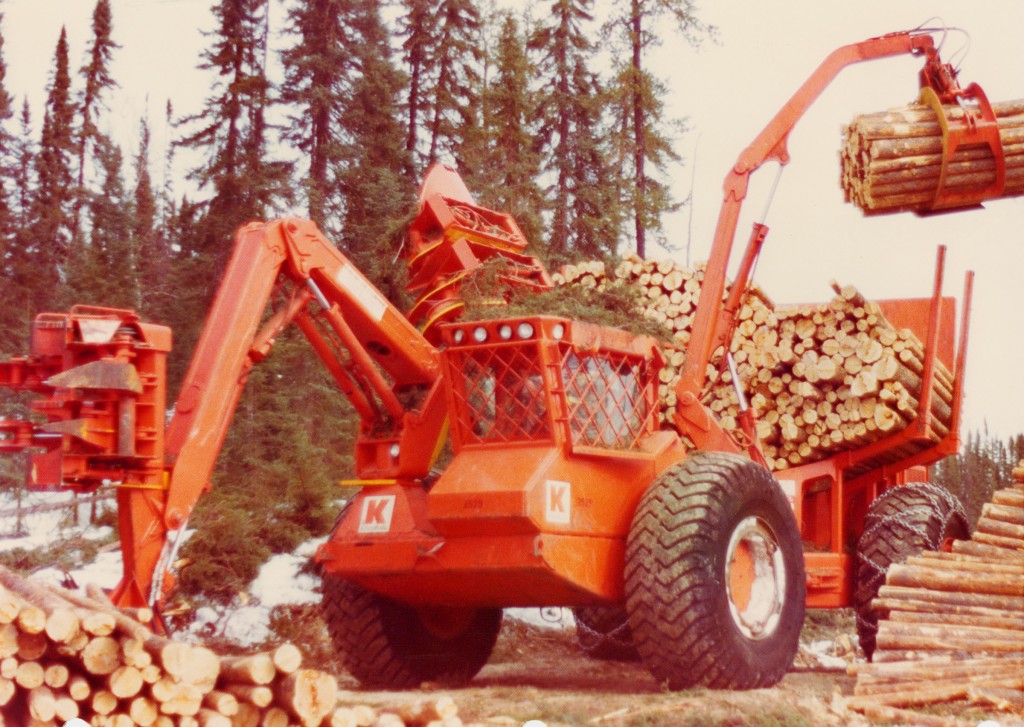1st November 2014
BTB recently visited the Cape Breton Highlands to see how the first 1135 harvester on the continent is working out. Truro, Nova Scotia based Highland Pulp Ltd. recently acquired the machine to perform ghost thinning.
— Paul Iarocci
Highland Pulp is a family business owned by James Tompkins with a long history in Cape Breton. James’ father, Donald Tompkins who founded Highland Pulp in 1962, was a pioneer in mechanization, running a Beloit harvester as early as 1965. Donald purchased a Koehring shortwood harvester in 1970 and as James explains, “We ran it until 1989. The last few years it did site prep work.”
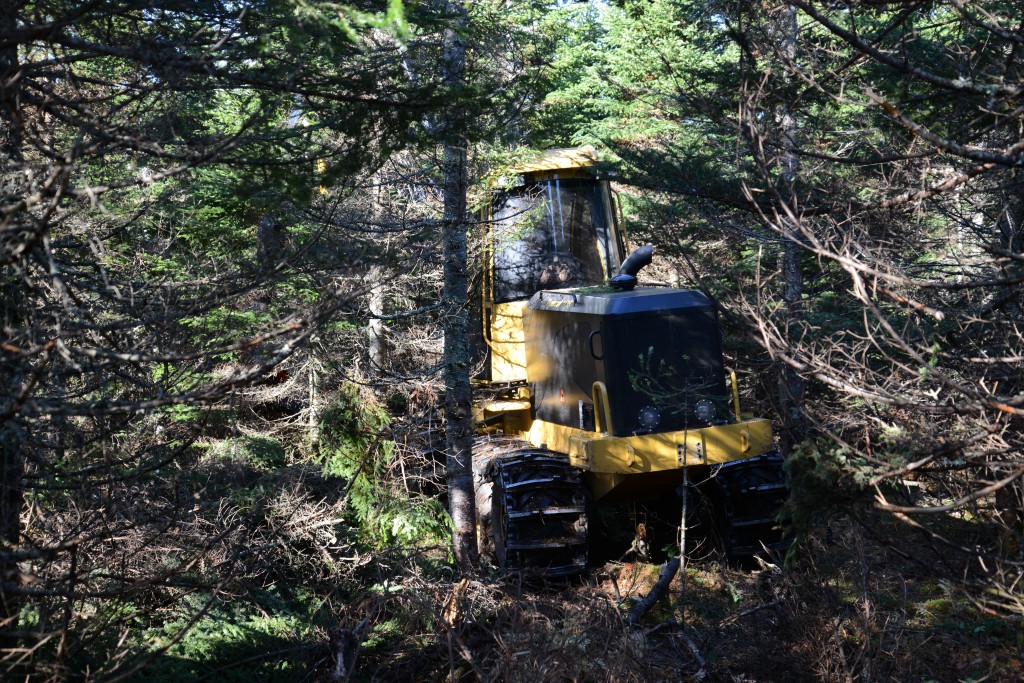
With a narrow overall width and tapered cab, the 1135 can weave through tight stands without contacting or damaging residual trees.
(Note to reader: Many members of the original Tigercat team came from Koehring Waterous, a heavy equipment manufacturer located in Brantford and purchased by Timberjack in 1988.)
Donald passed away in 1983 just as the spruce budworm was capping off several years of devastation in Cape Breton forests. The outbreak ultimately destroyed about 1,2 million hectares (3 million acres) of woodland, triggering a wholesale clear fell salvage effort. Eventually there was no wood left to cut. After his father’s passing, James as the eldest son, stepped up to run the business. In 1989, he relocated the company from Margaree Valley to Truro (on the mainland of Nova Scotia).
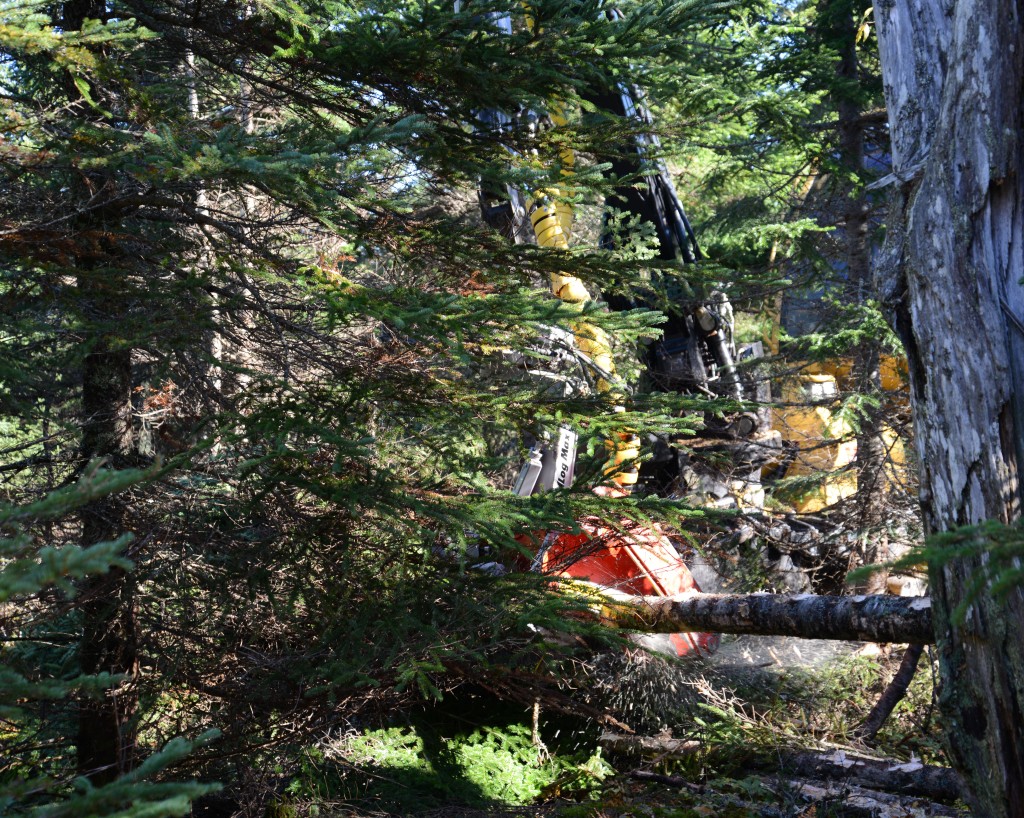
The 9,7 m boom has a tilting base allowing the operator to reach around standing trees. Operator Jacob Curry processes the logs to the nearest forwarder trail. The forwarder trails are spaced 30 m apart.
Now some 25 years later, Highland Pulp is back in the Highlands for the short summer season, performing thinning and clear fell harvests within the marginal and largely unmanaged forests that were replanted in the wake of the budworm infestation. Highland Pulp’s clear fell crews utilize a combination of Tigercat 845 series harvesters and 14-tonne forwarders. James purchased his first Tigercat H845B harvester in 2001 and the prototype Tigercat 1014 forwarder in 2004. He just recently sold the 1014 and the H845B is still running every day. Oddly enough, the harvester broke down with a bad alternator nearly the moment it was delivered. James and Tigercat district manager, Chris Baldwin worried that the machine might be a lemon, but the subsequent 35,000 hours of virtually bulletproof, double shift operation have assuaged their initial concerns. This year James purchased a new H845C from Wajax Equipment Maritimes forestry manager Sandy Hodgson, taking delivery in January, 2016. Highland Pulp runs three H845 series harvesters in total.
Then in September 2014, Highland Pulp purchased the first 1135 in North America from Wajax after Hodgson and Tigercat district manager Chris Baldwin thoroughly assessed the company’s requirements. (Baldwin has a great deal of experience with the 1135 product, after spending many years working in the Swedish market.) The 1135 was developed in 2009 for in-stand first thinning (or ghost thinning) in Sweden. Ironically it is another ghost in the forest, the elusive and threatened American pine marten, that is dictating this ultra-low impact harvesting technique. “If it wasn’t for the ghost thinning, Port Hawkesbury Paper would not be able to utilize this timber at all,” says James. Highland’s 1135 is working on a portion of forest land encompassing around 40 000 hectares (100,000 acres) in total, that is protected as a pine marten habitat.
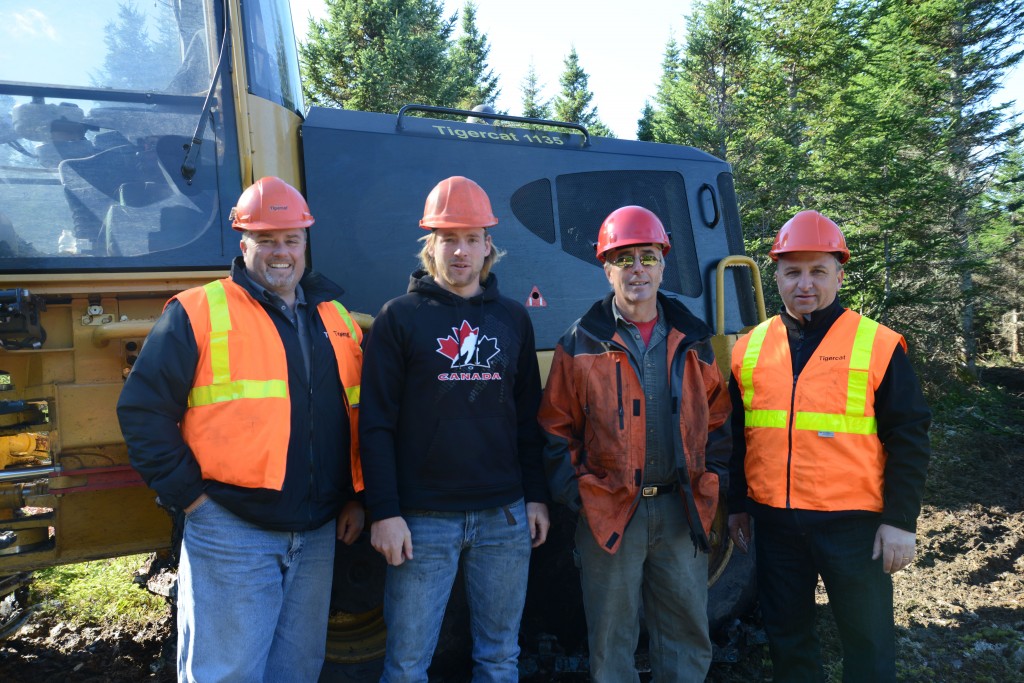
Tigercat district manager, Scott Earle with 1135 operator Jacob Curry, Highland Pulp owner James Tompkins and Sandy Hodgson, Wajax Maritimes forestry manager.
The last time ghost thinning treatments were performed anywhere in the province was ten years ago. The technique is coming back, not just for pine marten habitat in Cape Breton, but also on the mainland, where the 30 m (100 ft) forwarder trail spacing is a requirement to mitigate blowdown risks exacerbated by the shallow root mass that characterizes much of the forest land.
The idea is to space minimal width forwarder trails 30 m apart. Then the 1135 does two passes in between the trails, using the 9,7 m (32 ft) crane to process wood to the nearest trail, as it winds its way through the forest, removing trees to a basal area of 20. The thinning volumes are later confirmed with the use of LIDAR (Light Detection and Ranging) equipped drones. The LIDAR system uses laser pulses to generate 3D profiles, providing reliable data on stand inventory including volume and diameter distributions.
The 1135 along with the rest of the harvesting equipment, working in the Highlands, moves to mainland Nova Scotia at the end of October, because winter harvesting is not feasible on the island – snow cover in the upper elevations is routinely over three metres.
James took over Highland Pulp at a young age. His two younger brothers work in the business. Robert is a mechanic and Kevin, an operator. James has two sons, Adam and Michael, who also work in the business. Both are apprenticing as heavy equipment technicians. Currently, Adam is managing the thinning crew.
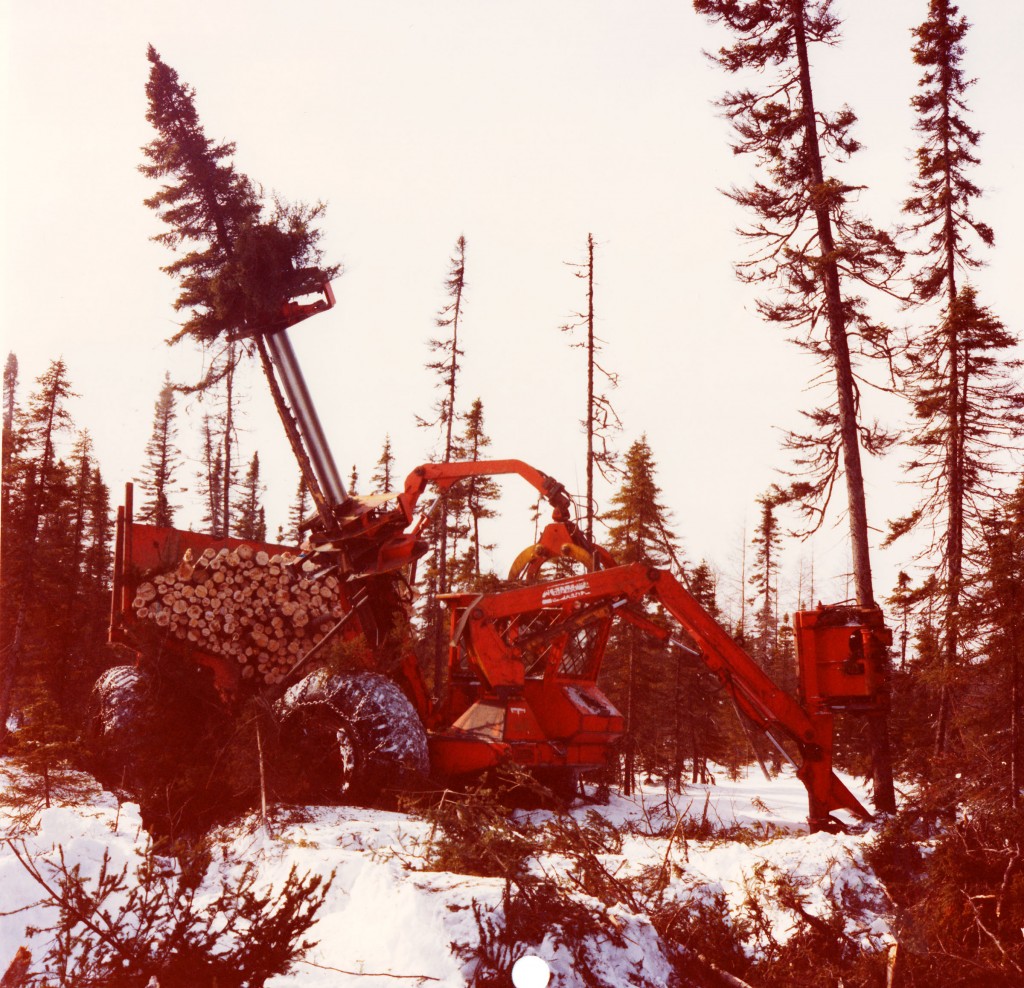
The Koehring shortwood harvester. Donald Tompkins was a pioneer of mechanization. Highland Pulp ran the machine from 1970 to 1989.
1135 operator Jacob Curry had no prior experience on a wheel harvester, but after a month on the machine, he is confident and productive in the close quarters. The trees are short, extremely limby and densely spaced – limiting both visibility and room to manoeuvre. Walking behind the 1135 in the stand, it is hardly possible to tell that a 15 tonne machine has just wandered through. The extra narrow machine width and highly manoeuvrable crane, that can literally reach around standing trees, help to keep forest disturbance to an absolute minimum. A novel aspect of this 1135 is that it is carrying a larger head (Logmax 5000) than any of the machines that are operating in Sweden. This was a requirement for James, so that the harvester would be versatile to handle larger timber and clear fell jobs as required.
